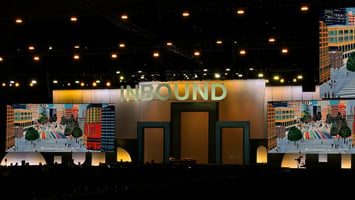What I Learned While Building In RollerCoaster Tycoon® Deluxe

You could get an MBA, or just play RollerCoaster Tycoon® for 3 hours.
RollerCoaster Tycoon®, the ultimate amusement park business simulation game, was originally developed by Chris Sawyer and published by Hasbro Interactive in 1999. Its lessons in life, business, and the pursuit of happiness are timeless. Certainly, there are things an advanced business degree can afford you that the video game series cannot, such as human interaction. But the lessons I’ve learned while navigating the volatile theme park industry are invaluable. Here’s what they are:
You can have a little debt, as a treat.
When I was young and naive, I would start a new game and immediately max out the loan offered. I would watch my company’s cash add up and think, “Wow this is the easiest game I’ve ever played.” Little did I know, my company would struggle to pay back this loan and the interest for its entire life. No matter how extravagant and amusing my park was, I could never get it out of the red financially. Without a loan, however, there was no way I could come up with the money necessary to build a successful theme park. I learned to strike a balance and borrow money that I knew I could afford to borrow based on my revenue goals. A little debt can create new opportunities and ultimately be a good thing.
Data is everything.

Companies are becoming more and more obsessed with data because of its ability to inform strategic decisions. Gone are the days of guessing what move to make next. This graph shows my Park Rating over time. It’s clear that I made some questionable decisions in May, June and July. By using this data and reflecting on those decisions, I was able to reverse the damage in August and maintain a top rating into Q4. Always ensure your company is paying attention to the data.
Know all there is to know about your target market.
My park became incredibly popular; I had all the new rides, the best staff (we won an award), and a unique experience for everyone that walked through the gates. I decided it was time to increase entry fees to $75 per person to reflect the park’s unmatched quality of entertainment. Soon, the Park Rating began to plummet and for the first time in the park’s history, more guests were leaving than were entering. I decided to initiate some market research to see if I could uncover what went wrong. It turns out, the average park guest was bringing a total of about $80 to the park with them. With the entry fee at $75, this left only $5 for them to spend on rides, refreshments, souvenirs, and transit. Guests were disappointed with the value and leaving the park a lot sooner than normal. I quickly lowered the entrance fee to $50 and implemented a 5-week comprehensive digital marketing campaign to drive traffic to the park. The decision (made in April) had the following effect on our financials:

In May, revenue from Park Entrance Tickets was up 59.5% MoM and Gross Profit increased by 70.3%. This is a prime example of why it is so important to thoroughly understand your target market and be able to predict how they might respond to change.
Your company is the sum of your people.

Labor might be your most expensive resource but talent is your most valuable. Without our staff, MKM World would never have received these awards and could never have created the most memorable theme park experience in the Northeast. Having fully-staffed teams means the park stays secure, the grounds stay clean, and the rides stay operational. Investing in your employees is one of the most sound business practices your company can adopt to turn your workplace culture into a competitive advantage.
Contact MKM today and see how we can help you become the next Tycoon of your industry.

%20for%20B2B.png?height=200&name=Digital%20Sales%20Rooms%20(DSRs)%20for%20B2B.png)
